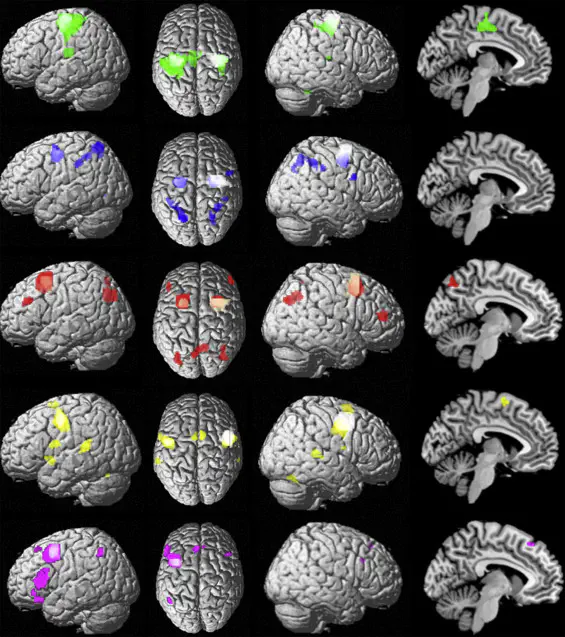The heterogeneity of the left dorsal premotor cortex evidenced by multimodal connectivity-based parcellation and functional characterization
 Specific functional connectivity
Specific functional connectivityAbstract
Despite the common conception of the dorsal premotor cortex (PMd) as a single brain region, its diverse connectivity profiles and behavioral heterogeneity argue for a differentiated organization of the PMd. A previous study revealed that the right PMd is characterized by a rostro-caudal and a ventro-dorsal distinction dividing it into five subregions, rostral, central, caudal, ventral and dorsal. The present study assessed whether a similar organization is present in the left hemisphere, by capitalizing on a multimodal data-driven approach combining connectivity-based parcellation (CBP) based on meta-analytic modeling, resting-state functional connectivity, and probabilistic diffusion tractography. The resulting PMd modules were then characterized based on multimodal functional connectivity and a quantitative analysis of associated behavioral functions. Analyzing the clusters consistent across all modalities revealed an organization of the left PMd that mirrored its right counterpart to a large degree. Again, caudal, central and rostral modules reflected a cognitive-motor gradient and a premotor eye-field was found in the ventral part of the left PMd. In addition, a distinct module linked to abstract cognitive functions was observed in the rostro-ventral left PMd across all CBP modalities, implying greater differentiation of higher cognitive functions for the left than the right PMd.